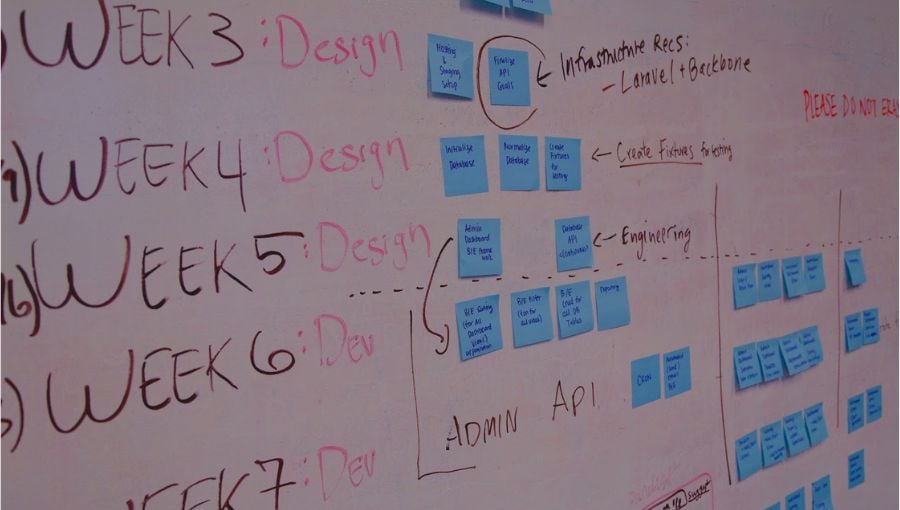Review and approval: it’s the final frontier of project completion. There’s no better feeling than checking off a review step or updating the status of a project to “Approved.”
There’s just one catch: Content review and approval isn’t a creative project management issue. It’s a project management task or step, to be sure, but the actual act of proofing marketing content shouldn’t be categorized as just a project management responsibility.
It’s a bold claim, and one that might ruffle a few feathers among Marketing Operations or Project Management experts out there. What we’ve seen, however, is that project management systems only solve half the battle when it comes to content proofing and approval. Here’s why.
It Tracks Deadlines and Tasks, Not Content Updates
Take the typical mid-sized agency or in-house creative team. Likely, the team already has an online project management or collaboration software in place, such as Trello, Asana, monday.com, Redbooth, or Slack, to manage project organization, build a project timeline, assign work, track the status of specific tasks, and communicate with the entire team throughout the process.
These systems enable project managers to build a fully transparent structure to track progress and break down tasks from project kickoff all the way to completion.
But these systems are just that: a shell structure for progress reports and deadline assignments.
What’s often missing is the actual ability to make the changes directly on or within the content itself and advance a project to the next iteration.
Project management systems can provide updates on the progress of iterative changes and facilitate conversations around these drafts, but they don’t actually enable iterative changes to be made on files themselves and often split feedback into multiple conversation streams that have to be compared against content files or version.
Learn how to supplement your project management strategy with online proofing with a copy of our free ebook "Building the Business Case for Online Proofing."
 ebook: Building the Business Case for Online Proofing
ebook: Building the Business Case for Online Proofing
Read why online proofing software is both necessary for re-cooping project ROI and how to make it an accessible and affordable tool for your organization.
It Doesn’t Address Work-in-Progress Needs
Although project management can facilitate updates about project files and their current status, a project management system is usually just a pass-through system for actual content sharing and review. The actual work-in-progress actions involved with detailed review and approval--adding comments within text files, adding markups to design files and images, making annotations within videos--typically still must occur in a separate system.
In project management suites, files must be continuously uploaded and downloaded from personal drives or linked from other online editing suites, like Google Documents, for actual review. This then creates two separate collaboration environments--the collaboration and status tracking in a project management system, and the actual file modification (which often includes its own discussions and comments within or around the file) in another environment.
Plus, finding the most accurate, current version of project file or comparing changes over time still takes some digging through old conversation threads or project spaces. Most project management suites also don’t contain many options for enforcing content changes in the process, such as locking a document from modification during review or assigning tiered access rights for file access. Expecting project management suites to also function as a dynamic content repository and markup suite just isn’t realistic.
It’s Difficult to Bring in External Collaborators
Content review isn’t just a one-and-done task; it’s often a cyclical process that requires continual communication and content access. Efficient review and approval requires close collaboration with outside stakeholders, from external clients to freelance content creators to internal stakeholders in different departments.
If you’ve ever tried to add a freelancer to an internal Trello or Asana board, however, you know that project management suites aren’t always built for external access. Often, it’s difficult to include someone on project management tasks who don’t have a business email address with your company. They either end up having too much access or none at all. It’s why so many agencies still default to relying on inefficient email communication to send documents to clients for review and sign-off.
How to Supplement Project Management with Online Proofing
It’s important to note that a review and approval function isn’t some missing feature of project management systems. Project management suites simply aren’t designed to be a review and approval engine at the granular level.
What’s needed is a complementary proofing system that can:
- Centralize project files
- Combine comments and feedback to the actual context of content
- Enforce review and approval workflows for both external and internal contributors
Online proofing systems excel in managing work-in-progress tasks. They not only keep project files in one space, but enable interaction with files of all formats natively instead of needing to jump between multiple systems to add feedback.
You might be asking: if project management and online proofing are two separate functions and systems, won’t that just create duplicate workstreams and collaboration spaces?
In an ideal world, work-in-progress actions can be used to trigger the creation and progression of project management tasks in a project management portal.
For example, our project management integration uses updates within Ziflow to drive certain project management tasks in other systems. When a proof is approved within Ziflow, a task is automatically created or updated on Trello, Slack, Basecamp and other project tracking systems.
With this kind of real-time syncing, content proofing updates and actions and project management updates work in lock-step to keep both review deadlines and content updates moving. It also reduces the project management load by eliminating the need to manual update tasks in a project management system.
When project management technology and online proofing systems go hand-in-hand, Marketing Operations receives the best of both worlds: a structured environment for tracking real-time project status updates and a dynamic space for gathering, centralizing and facilitating feedback for all content formats.
Learn how to supplement your project management strategy with online proofing with a copy of our free ebook "Building the Business Case for Online Proofing."



